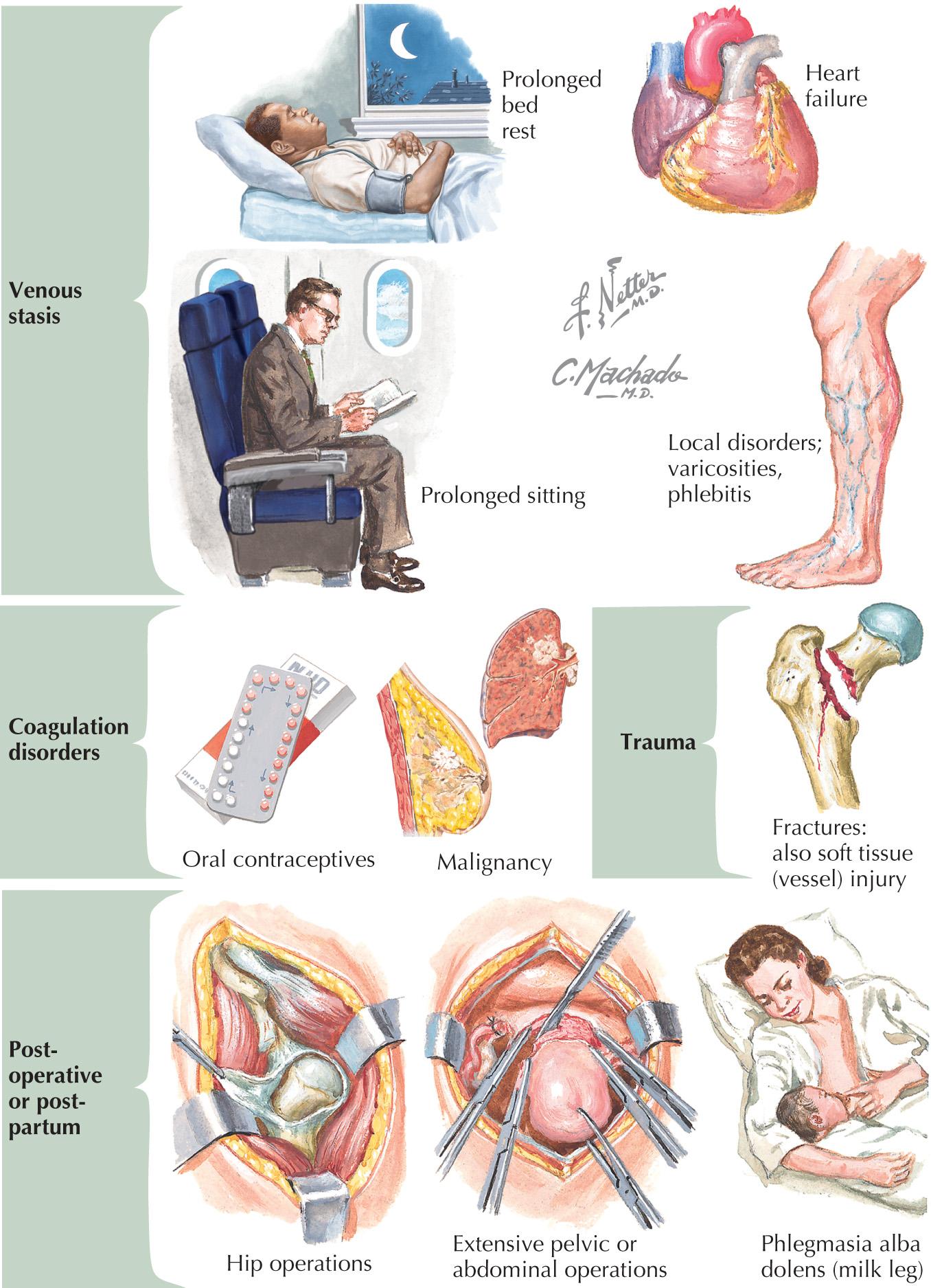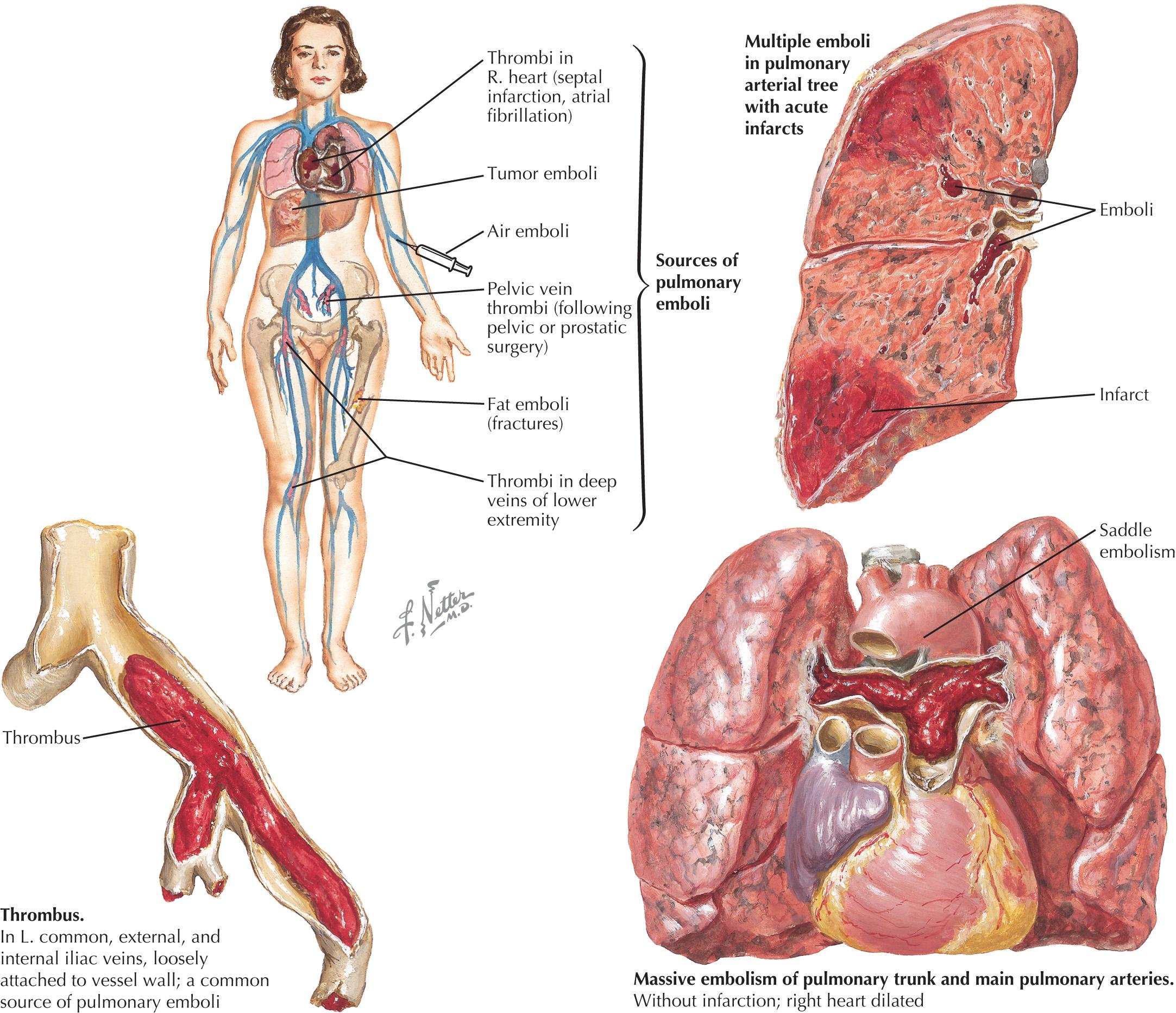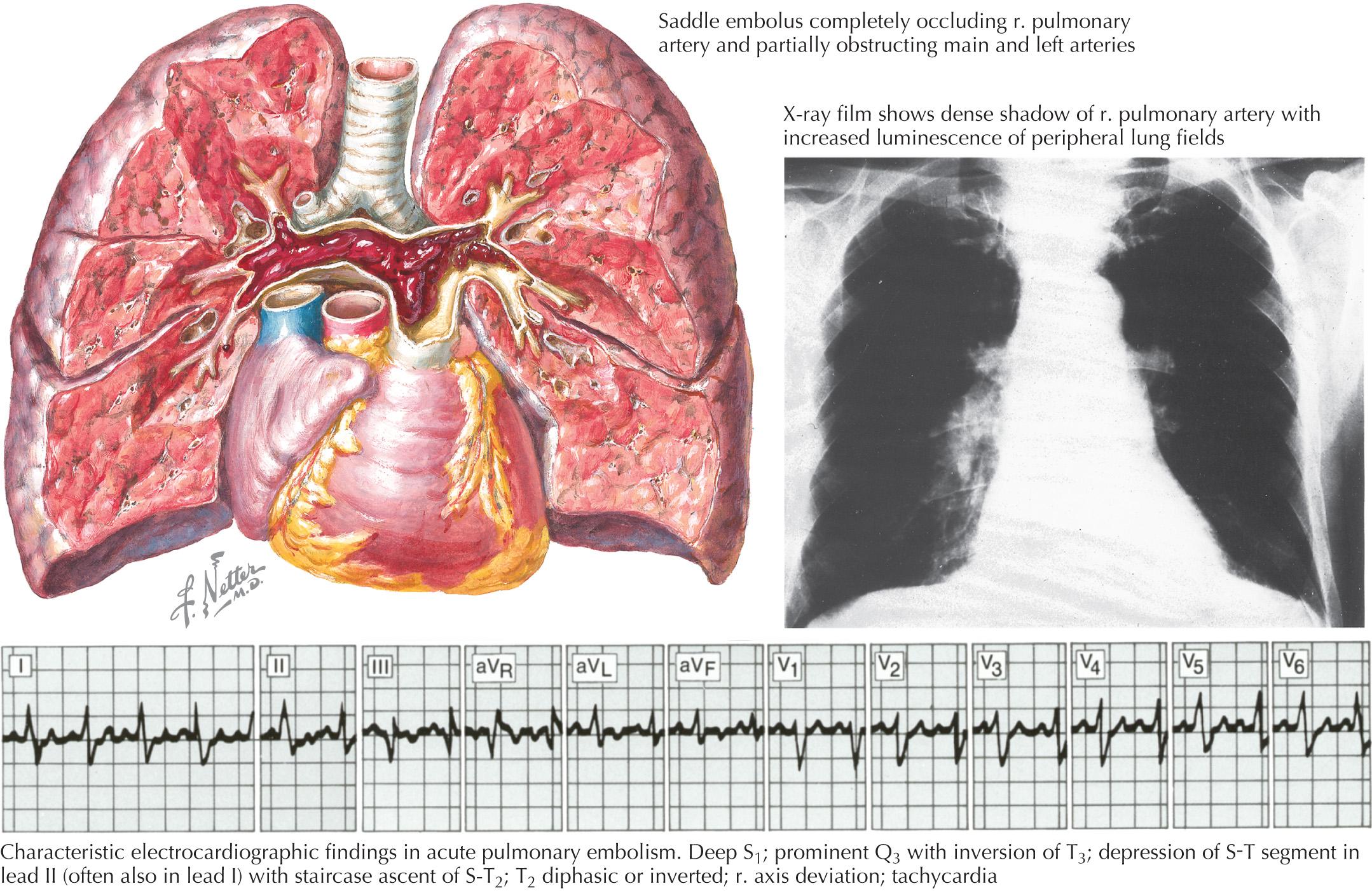Physical Address
304 North Cardinal St.
Dorchester Center, MA 02124
Venous thromboembolism (VTE) is common and has an annual incidence of approximately 0.1% in the general population. VTE is a broad term used to include patients with both deep venous thromboembolism (DVT) and pulmonary embolism (PE). These conditions warrant consideration together because up to 90% of PEs are secondary to DVT in the iliac, femoral, or popliteal venous systems. Less common sources of PE include calf vein thrombosis, pelvic vein thrombosis, thrombus formation from right heart abnormalities, upper extremity thrombosis, invasive tumors (renal cell carcinoma), and fat embolism secondary to trauma.
Venous thrombosis occurs when there is stasis of blood flow, endothelial injury, and hypercoagulability (commonly known as Virchow triad). Stasis of blood flow can occur when venous outflow is obstructed (e.g., May-Thurner Syndrome, which is left iliac venous obstruction secondary to an overlying right common iliac artery) or situations that lead to immobility ( Fig. 63.1 ). Any travel resulting in immobility for >4 hours increases the risk of DVT by at least twofold, and this risk can persist for several weeks after travel. Although all hospitalized patients who are immobile are at increased risk of DVT, those in the postoperative setting have an additional risk. Surgery and trauma affect each element of the Virchow triad by decreasing venous flow in the setting of immobilization, allowing the exposure of tissue factor through endothelial damage, and increasing hypercoagulability via depletion of endogenous anticoagulants. Hypercoagulability can be inherited or acquired. Factor V Leiden mutation, prothrombin gene mutation, protein S deficiency, protein C deficiency, and antithrombin III deficiency are inherited conditions that account for approximately 10% of DVTs. Of these conditions, patients with protein S deficiency are most likely to have a DVT in their lifetime. Acquired hypercoagulable conditions include antiphospholipid syndrome, nephrotic syndrome, inflammatory bowel disease, heparin-induced thrombocytopenia, pregnancy, oral contraceptive pills, hormone replacement therapy, myeloproliferative disorders, and malignancy.

The pathogenesis of PE begins with the embolization of DVT ( Fig. 63.2 ). PE results in a ventilation and/or perfusion (V/Q) mismatch by obstructing perfusion of pulmonary alveoli that have normal ventilation, leading to impaired gas exchange and/or hypoxemia, and possibly even infarction of the lung. An inflammatory process can contribute to atelectasis, which leads to intrapulmonary shunting and stimulation of the respiratory drive and respiratory alkalosis with hypocapnia. PE can also lead to acute pulmonary infarction if small emboli occlude the distal segmental and subsegmental vessels. The resulting parenchymal necrosis and pleural inflammation can cause pleuritic chest pain. Finally, PE can lead to obstructive shock and cardiovascular collapse if the thrombus burden is large enough to obstruct cardiac output from the right ventricle ( Fig. 63.3 ). Large PEs can cause increased pulmonary vascular resistance, pulmonary hypertension, acute right ventricular (RV) failure, and RV dilatation. Due to the RV dilatation and reduced RV output, the left ventricular (LV) preload decreases and the cardiac output decreases, leading to systemic hypotension and obstructive shock.


When evaluating patients with possible DVT and/or PE, it is important for the clinician to be familiar with risk factors for VTE. The most important risk factors are immobilization or prolonged bedrest, recent surgery, tobacco use, obesity, previous VTE, lower extremity trauma, malignancy, hormone or oral contraceptive use, pregnancy or postpartum status, and stroke. A history of DVT and malignancy are the strongest predictors of VTE.
The most common presenting symptoms of DVT are unilateral pain (46%), edema (40%), swelling (25%), and tenderness (27%) of the lower extremity. The location of symptoms does not always correlate with the location of the DVT. Patients with an isolated calf DVT can have pain throughout the leg, whereas patients with symptoms predominantly in the calf may have a proximal DVT. Physical examination findings consistent with DVT are calf erythema, calf warmth, and difference in calf diameter. Patients may have evidence of Homan sign, which is seen when there is resistance or pain with dorsiflexion of the foot. However, this sign is of little clinical usefulness because it is neither sensitive or specific for a DVT. The absence of calf swelling and/or difference in calf diameter are the most clinically useful findings when attempting to rule out DVT because each have a negative likelihood ratio greater than two.
Patients with PE can have a variety of different presentations that range from no symptoms to shock and/or hemodynamic collapse. The most common presenting symptoms, in order of prevalence, are dyspnea, pleuritic chest pain, leg pain and/or swelling due to DVT, cough, orthopnea, wheezing, and hemoptysis. Less common presentations include arrhythmias, presyncope, syncope, and shock. Dyspnea, especially due to proximal infarction of a proximal vessel, is typically sudden in onset, with patients noticing worsening breathlessness over a matter of seconds. Distal vessel infarction can cause pleural inflammation and pleuritic chest pain. It is important to note that the preceding symptoms may be absent, even in the setting of significant amount of thrombus burden, and up to 25% of patients will not report the presence of dyspnea. Signs of PE, in order of prevalence, include hypoxemia, tachypnea, lower extremity pain and/or swelling, tachycardia, rales, decreased breath sounds, loud pulmonic component of the second heart sound, jugular venous distention, and fever ( Fig. 63.4 ).

The differential diagnosis for DVT includes other disorders that cause redness, swelling, and/or pain of the lower extremities. Muscular injuries are a frequent cause of swelling and pain, and are typically apparent by history. Immobility that results from these musculoskeletal injuries can predispose patients to DVT. Baker cysts are the result of fluid collection that can result in swelling behind the knee. When these cysts rupture, they can cause calf pain and appear similar to a DVT. Large cysts can compress the popliteal vein, and cause concomitant DVT via venous stasis. Lymphangitis, inflammation of the lymphatic vessels, can be caused by both infectious and noninfectious causes. In patients with lymphangitis, it is important to evaluate the distal extremity for evidence of skin abrasions or infection. Cellulitis is a common cause of acute unilateral edema, pain, redness, and swelling of the extremity, and can present with a fever. It is more common in patients with chronic venous insufficiency and lymphedema. Patients with lower extremity edema from either increased venous pressure (heart failure, constrictive pericarditis, venous outflow obstruction, stasis, or insufficiency) or loss of oncotic pressure (malnutrition, liver disease) can have presentations similar to that of a DVT.
The differential diagnosis of PE includes processes that cause acute dyspnea, chest pain (especially pleuritic), hemoptysis, tachycardia, and/or hypoxia. Pneumothorax, a collection of air between the visceral and parietal pleura that results in collapse of the lung, can cause acute dyspnea and chest pain. Tension pneumothorax is a life-threatening condition that must be recognized and treated quickly. Acute coronary syndrome (ACS), which is also life-threatening, typically manifests with angina rather than pleuritic chest pain. Dyspnea and hypoxia are not as profound in ACS as in patients with a PE, and hemoptysis is rare. Pneumonia manifests as fever, cough, and consolidation on imaging, which can help differentiate this condition from PE. Vasculitis, with or without diffuse alveolar hemorrhage, can lead to hypoxia and hemoptysis, but should have evidence of an interstitial infiltrate on imaging. Primary pulmonary malignancies or metastases can cause acute intrapulmonary complications leading to hemoptysis, hypoxia, chest pain, and pleural effusions. Likewise, the worsening of underlying lung disorders, such as chronic obstructive pulmonary disease (COPD), asthma, bronchiectasis, and congenital heart diseases, can also cause respiratory decompensation.
Become a Clinical Tree membership for Full access and enjoy Unlimited articles
If you are a member. Log in here